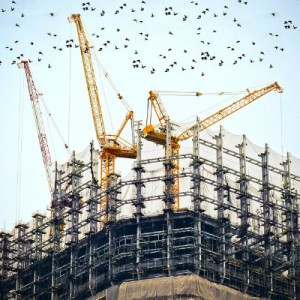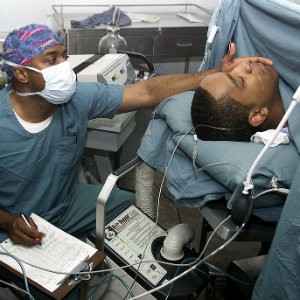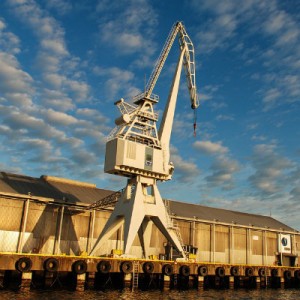
Although this machine has helped construction workers do their jobs faster and more efficiently, the machine itself is quite heavy and large. If certain safety precautions aren’t taken, accidents happen, and hard working Americans get hurt.
Preventable Causes Of Accidents
Sadly, crane accidents happen more often than they should, like the one in New York City in which one man was killed and several others injured after a crane collapsed. The accidents frequently occur due to:
Crane collapse: When a crane is being moved or if the boom is extended too far, part of the crane or the entire structure can collapse, injuring anyone who is unlucky enough to be below.
Issues During the Assembly / Disassembly: Not all cranes arrive at the work site in one piece. When putting a crane together or taking it apart, the work must be done according to the manufacturer’s instructions. Failure to do so can cause accidents due to machine malfunction or instability.
Contact With Electrical Lines: Cranes are made of metal which is an excellent electrical conductor. Nearly 40% of all crane accidents occur when the part of the crane comes into contact with overhead lines, leading to the electrocution of anyone in contact with the machine.
Operator Error: If the person operating the crane makes a mistake it can cause the crane to drop the heavy load it is moving, tip over, or even crash into other machines and buildings.
Defects: Contractors, managers, and workers can do everything within their power to prevent crane accidents, but if the machine itself has a flaw or defect, there may be nothing they can do to stop an accident from happening. Manufacturers are responsible for ensuring that the machines they design, build, and sell meet all of the industry standards.
Whatever the cause of the accident, the injuries suffered by the workers unlucky enough to be involved can be horrific.
Devastating Injuries
Construction workers that are involved in crane accidents often sustain:
- crush injuries
- broken bones
- spinal injuries
- traumatic brain injury
- electrocution, or
- other injuries that may result in death
In many cases, the injuries that the worker suffers will be so serious that they will require hundreds of thousands of dollars in medical care and may not be able to work for a long period of time, if they are ever able to return to work.
OSHA Regulations
In order to try and prevent these accidents and injuries from happening, the Occupational Safety and Health Administration has created a set of safety standards which everyone using cranes must abide by.
Regulations include, but are not limited to, rules such as:
- Cranes must meet the design specifications set forth by the American National Standard Safety Code.
- Modifications to cranes are allowed, however, any modifications must be checked and rated for a new load by a qualified engineer or the actual manufacturer of the equipment.
- The total weight that the crane has been rated to carry will be clearly marked on the side of the machine, and if there is more than one hoist, each hoist will have its own separate load bearing capabilities marked.
- The crane will not be used to lift loads that are heavier than the rating on the machine indicates.
- A minimum of 3 inches above and 2 inches on the side must be kept between the crane and any possible obstructions.
- Walkways or passageways must be kept free of obstructions so that employees will not be prevented from getting to safety should there be an issue with the crane.
- Only employees who are trained and licensed are allowed to operate the crane.
- The operator of the crane shall be provided with enough light in the cab that they can see the work they are performing.
- Whenever the crane is not in use, holding brakes must be applied.
- Inspections of the crane and its parts must be made on a regular basis – in fact, some of the parts, such as the drain pumps, tanks, valves, and hydraulic systems must be checked daily.
Despite these regulations, employers often make the decision to cut corners in order to save time and money.
What Happens If Safety Regulations Aren’t Followed?
OSHA can, and will, make surprise inspections of any construction site. If the determine that the safety standards are not being met, the inspector can subject the person responsible to fines, shut down the site until the correct measures have been put into place, and, if the failure to adhere to safety standards resulted in a fatality, they can even send their case to a criminal prosecutor.
The Rights Of Injured Workers
Those who have been injured in a crane accident have the right to file a workers’ compensation claim, regardless of who was at fault for the accident. 
But the process of filing for workers’ compensation isn’t always an easy one. Insurance companies do everything in their power to reduce the amount of money that they need to pay out each year, and any mistakes that are made while submitting the forms will be used as a reason to delay or deny your claim. In fact, nearly 50% of all workers’ compensation claims are denied outright.
In most cases, an injured construction worker would benefit from consulting with a workers’ compensation attorney who can help guide them through the process of filing a claim.
Do I Really Need A Crane Accident Attorney?
You don’t need the stress of dealing with the insurance company on top of dealing with medical and financial losses. An attorney can help you understand the workers’ compensation system, find and fill out the correct forms, keep the heat on the insurance company, speak to adjusters, and, if the claim is denied, help to fight for your rights through the appeal process.
Our firm has helped hundreds of construction workers for nearly seventy-five years. Call us for a free consultation so that we can go over the details of your accident and determine what your options are.

